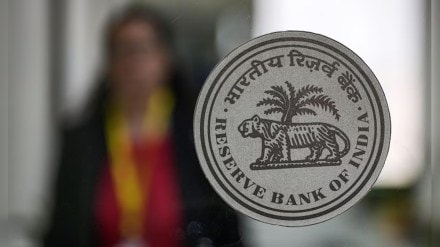In a significant stride towards regulatory reform, the Reserve Bank of India (RBI) has set up a 30-member Regulatory Review Cell (RRC), a dedicated internal mechanism, to streamline financial regulations and reinforce systemic resilience.
Announced as part of a broader push for modernisation, the RRC is tasked with evaluating existing rules, identifying redundancies, and sunsetting outdated provisions. This initiative aims to eliminate obsolete provisions that no longer serve their purpose but continue to create operational friction for regulated entities.
“It’s about evolving intelligently rather than accumulating complexity,” said RBI Governor Sanjay Malhotra at the recently held FE BFSI Summit. He stated, “We are consolidating and not introducing a new framework per se. The purpose is to see whether we have any obsolete regulations.” The Cell will evaluate relevance, cost-benefit impact, consumer centricity and possible regulatory gaps. “Our aim is to simplify and reduce compliance complexity and enhance transparency,” he added.
Thousands of rules under the lens
Currently, RBI has about 8,000 regulations, circulars, master directions, and notifications, out of which around 5,000 are obsolete or redundant. The RRC’s creation will support RBI’s plan to consolidate regulations into a refined, coherent set of approximately 3,000 active regulations. In the first phase, it has identified 33 core subjects where it will unify directives. “The regulatory review cell is tasked with assessing regulations every 5–7 years,” added Malhotra. This rationalisation will enhance clarity, reduce compliance costs, and free up management bandwidth for strategic governance.
Sources indicate that this time it’s an internal exercise, with around 30 officers from various departments in RBI already working on analysing and streamlining existing regulations for the past few months. The Cell is identifying regulatory blind spots and areas of insufficient oversight, and proposing corrective measures to fortify prudential norms. As this is a directive from the Governor himself, the process is expected to be expedited and will later be reviewed by him and the Deputy Governors.
From patchwork to institutional reform
Economist and former monetary policy committee member Ashima Goyal endorsed the shift, saying it could enhance transparency and reduce compliance costs, encouraging optimal market incentives. “Regulatory review needs to be occasional. So, if that’s going to be done regularly, that’s a good thing,” said Goyal, who drew attention to legacy norms that linger without reassessment, likening some outdated regulations to a forgotten guard by a staircase, a metaphor for obsolete rules that remain enforced without purpose. “Some staircase were painted… someone is put there to warn people not to touch… Everything had dried, and people had forgotten about this person,” says Goyal, further stating, “rethinking and simplifying regulations is beneficial not only for clarity but also for ensuring proportional, preventive financial oversight.”
This move marks a departure from one-off regulatory clean-ups like RRA 2.0, launched in 2021 and concluded in 2022 under Deputy Governor M Rajeshwar Rao. That initiative succeeded in withdrawing over 1,000 outdated circulars and introducing consolidated Master Directions for better clarity. The new Cell will institutionalise this process, embedding regulatory hygiene into the RBI’s operational DNA.
Pratish Kumar, Partner at legal firm JSA, welcomed the RRC’s formation, citing its potential to cut through historical clutter and pave the way for a more streamlined regulatory environment. “Compilation is not helping… withdrawing the old circular and issuing the new circular is the only thing that can help the industry,” he said, highlighting that legacy clauses still carry legal weight and foster inconsistencies, even within the RBI.
Meanwhile, Sanjay Agarwal, Senior Director at CareEdge Ratings, said, “The regulatory philosophy is shifting towards harmonisation across financial entities. The understanding we have is that the RBI has been trying to narrow down the regulatory arbitrage.” The RBI’s efforts to narrow down regulatory arbitrage ensure that no segment gains an unfair business edge solely from lighter oversight. He states, “quite a lot of those differences have been narrowed down so that uniform rules prevail across categories… That was the primary concern from regulators.”
Evolving approach reflects a more calibrated philosophy, states Agarwal. “Regulations are more in line with the way the underlying company would want to be regulated,” he remarked. However, he cautioned that the review process should be seen as administrative hygiene rather than a disruptive overhaul. He emphasised that every regulation has a reason and that meaningful deregulation often follows extensive deliberation. He cautioned against expecting a sweeping impact overnight, noting that “there may not be a material impact… it may be more of a gradual process.”
As the RBI embarks on its regulatory pruning exercise, stakeholders appear cautiously optimistic. The review cell may not rewrite the rules overnight, but it has initiated a broader dialogue on balance, clarity and long-term systemic trust.
